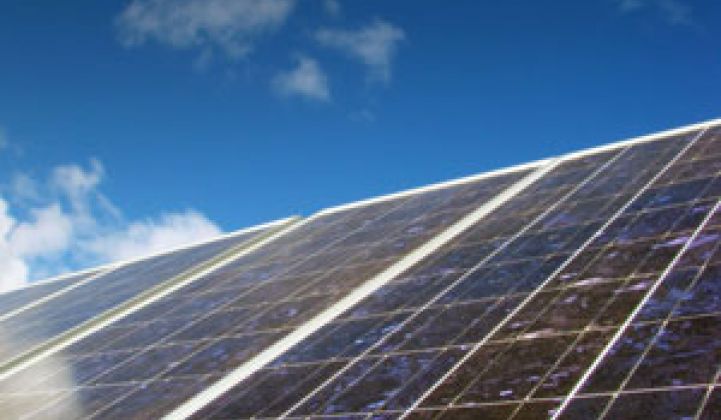When the U.S. National Renewable Energy Laboratory last week announced it had broken a solar-cell efficiency record, several savvy Greentech Media readers wrote in to express their doubts.
Hadn't a Department of Defense project led by the University of Delaware beat the record last summer?
Indeed, the Defense Advanced Research Projects Agency (DARPA) project in July of last year claimed its crystalline-silicon solar-cell technology had achieved an efficiency of 42.8 percent, breaking a record of 40.7 percent that had been set the previous year (see a story in the university newsletter here).
In its announcement last week, NREL claimed to have broken the same record, which had been set by Spectrolab in 2006, with a triple-layered cell that proved able to convert 40.8 percent of sunlight into electricity in lab tests (see Federal Lab Breaks Efficiency Record With ‘Mismatched' Cell).
We asked NREL how it was able to break the same record twice.
Simply put, the DARPA efficiency doesn't really count as a comparable number, said John Geisz, a senior scientist at NREL who led the triple-junction research.
"It's not really a valid number to compare with anything," he said.
The DARPA number was compiled by adding up the efficiencies of different parts of the cell to make a theoretical efficiency that wouldn't necessarily equate to a real efficiency once the cell was actually put together in a real panel, he said.
In addition, while a number of researchers achieve high efficiencies in a lab once, they are not considered validated test results until the efficiencies are confirmed by one of three authorized labs -- including NREL, a lab in Germany and a lab in Japan, Geisz said.
The point is to duplicate the results according to international industry standards, according to NREL spokesman George Douglas.
"The NREL cell has been validated under all of the protocols that are required in the industry," he said. "Someone might see a higher efficiency in a lab, but they need to be able to send that cell to a certified testing agency that can duplicate [the test] and get the same results."
A press officer for the Secretary of Defense agreed that the two efficiency numbers aren't really comparable, but added that the Department of Defense still thinks it beat the world record.
"We do claim a world record, but the NREL person is also correct," press officer Chris Isleib said in an e-mail. "The way the efficiency was measured on the DARPA cell is not the way efficiency is measured on a triple-junction cell almost by definition. So the measurements between the [two cells] are really an apples-to-oranges comparison."
One significant technical difference between the two measurements is that the DARPA cell was tested using only 20 suns - or 20 times the brightness of real sunlight - while the NREL test was using more than 300 suns, Isleib said.
But the main difference is that the two types of cells would be packaged differently and would perform differently in real-life use, he said.
"The way NREL measures efficiency for both triple-junction and the DARPA cell doesn't take into account this practical difference," he said.
Still, he agreed with NREL that the DARPA cell hasn't had its "real evaluation" yet.
"The real evaluation is when you have a fully packaged module and that is where we are heading," he said.
Douglas said the validation standards have long attracted argument in the solar world.
Different technologies perform better in different types of light, leading some researchers and companies to argue that the test protocols give some types of cells an advantage over others, even though the lower-testing cells might actually perform better in real-world conditions.
"You always get involved in these kinds of discussions when you claim to hold a record," Douglas said.



